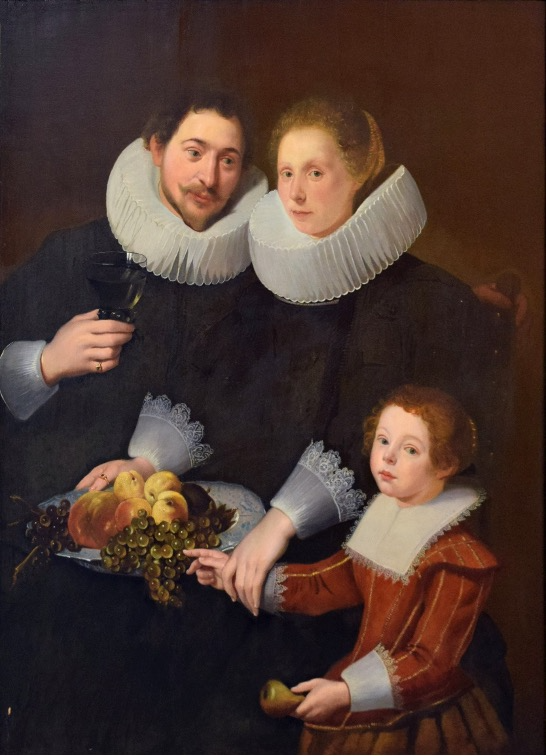
Cornelis de Vos (Flemish, 1585 - 1651), Family Portrait, c. first half of the 17th century, oil on panel, 48 1/4 x 37 1/4 in., Museum Purchase, 1945.136.1.
They Follow: Understanding the Illusion
Up on the wall sits a beautifully crafted portrait. Each brush stroke seems to have been made with such precision that it feels real, almost like it’s looking at you. You proceed left down the gallery, glancing back at the art, only to find the subject’s gaze still fixed on you. You double back, deciding maybe the right path is a better choice. The eyes are still locked on yours. Could this painting really be alive? Is it truly following you?
The short (and less spooky) answer is no.
The eerie feeling of being watched by a painting goes back centuries, and it has solidified itself as one of the classic tropes of horror media. Despite how real it feels, this occurrence is merely an optical illusion, often referred to as the “Mona Lisa effect.”
When artists create paintings, they coordinate light and shadow to create depth within their piece. Many also take it one step further with the use of linear perspective, in which all lines of a painting go towards a single focal point. Although these elements give the impression of dynamism, they are ultimately fixed onto the canvas. Unlike three-dimensional objects that have light, shadow, and perspective shifting along with your angle, visual information painted onto a flat surface doesn’t change. So, if a subject is painted to look at you, it will continue to do so no matter how or where you move. Conversely, if a subject is painted to look away from you, you will never be able to meet its gaze.
Next time you visit The Museum, test the effect for yourself! Find the painting in this post and observe it from a multitude of angles. Can you ever break away from the mother’s stare? Does the father ever appear to look at you?
Happy Halloween!
The Reading Public Museum is supported in part by grants from the Pennsylvania Council on the Arts and is located at 500 Museum Road, Reading, PA. Admission per day is: $14 adults (18-64), $8 children/seniors/college students (w/ ID), $6 active military (w/ ID), and free to members and children three years old and under. Currently enrolled Reading School District students and up to five accompanying guests receive free regular Museum admission and free admission to public Neag Planetarium shows with proof of enrollment. The Museum is open daily 11 a.m. to 5 p.m. Visit Online: www.readingpublicmuseum.org.
Source:
Clark, Josh. “Why Do the Eyes in Paintings Seem to Follow You Sometimes?” HowStuffWorks, 21 Feb. 2008, entertainment.howstuffworks.com/arts/artwork/eyes-in-painting-follow.htm.


 Menu
Menu
